Throughout history, many groundbreaking inventions and discoveries first debuted in fiction before inspired engineers built them in real life. Sherlock Holmes first used Fingerprints to solve a case before we humans did, and Tintin landed on the moon years before humans did. Today, we are coming up with explanations on how Time-Travel, proposed by HG Wells, might be feasible, while engineering props from the tales of Isaac Asimov are being built with the advancements in Quantum Mechanics. With the advancement of Science, the line between Science and Science Fiction is slowly blurring.
So, one might wonder, if the fictitious worlds of Science Fiction could potentially exist in the real world.
Anyone with even a remote understanding of Star Wars would know about Tatooine and the many desert planets like Jakku. Let’s scrutinize this planet from the decades of science we have learned since it was first imagined.

Location and Physical System
Located in the Outer Rim Territory of Arkanis Sector, the Tatooine of Tatoo system is a desert planet that orbits the binary stars of Tatoo I and Tatoo II in a P-type or a circumbinary orbit (ie, orbiting both the suns in a massive orbit). Legends say that the first colonizers of the system thought the planet was a third sun, given how bright it looked in the light of the twin suns. The planet has three Moons: Chenini, Guermessa, and Ghomrassen. The surface of the planet is covered with rocks shredded into ravines, valleys, crates, canyons, and seas of sand everywhere, and it has very little surface vegetation.
It is not impossible that a planet could be orbiting multiple stars. We have confirmed observations of planets such as Kepler-1647 and HD 202206, which are circumbinary, just like Tatooine. We have found planets in stable orbits or unstable orbits around even trinary star systems, such as the Alpha Centauri system, or even four stars, like Ph1b (Kepler 64b). It is not impossible to find a planet under such extreme conditions.
But there are certain limitations on the stability of such a system. For Circumbinary planets, it is expected that a planet should be at least two times as far as the stars are from each other, and the orbital period of the planet is at least three times more than the orbital period of the stars.
Since we see people living on the planet, aside from stability, we should also consider the habitability of such a system. For any system to be habitable, it has to orbit in what is called the Goldilocks Zone. It is essentially the region that is neither too hot nor too cold for life to exist. A binary star system would have more thermal output than a normal star, so it stands to reason that the binary star system would have a larger Goldilocks Zone than the individual stars.
The Earth is in the Goldilocks zone of our sun. If the earth were in a slightly larger orbit, that wouldn’t stop life from existing, but the atmosphere would be much colder, and Snow would be much more common across the planet. If Earth were in a slightly smaller orbit, it would have a lot more deserts and a much harsher climate. Similarly, given a habitable desert planet, it could be on the inner edge of the Goldilocks zone of the star.
Tatooine is an interesting case in that it orbits both stars in a binary system. It forms what is known as a P Type orbit. But, it is not the only possible planetary configuration in such a star system. A planet could orbit only one star, while the stars orbit a common point. This is called a S Type Orbit.
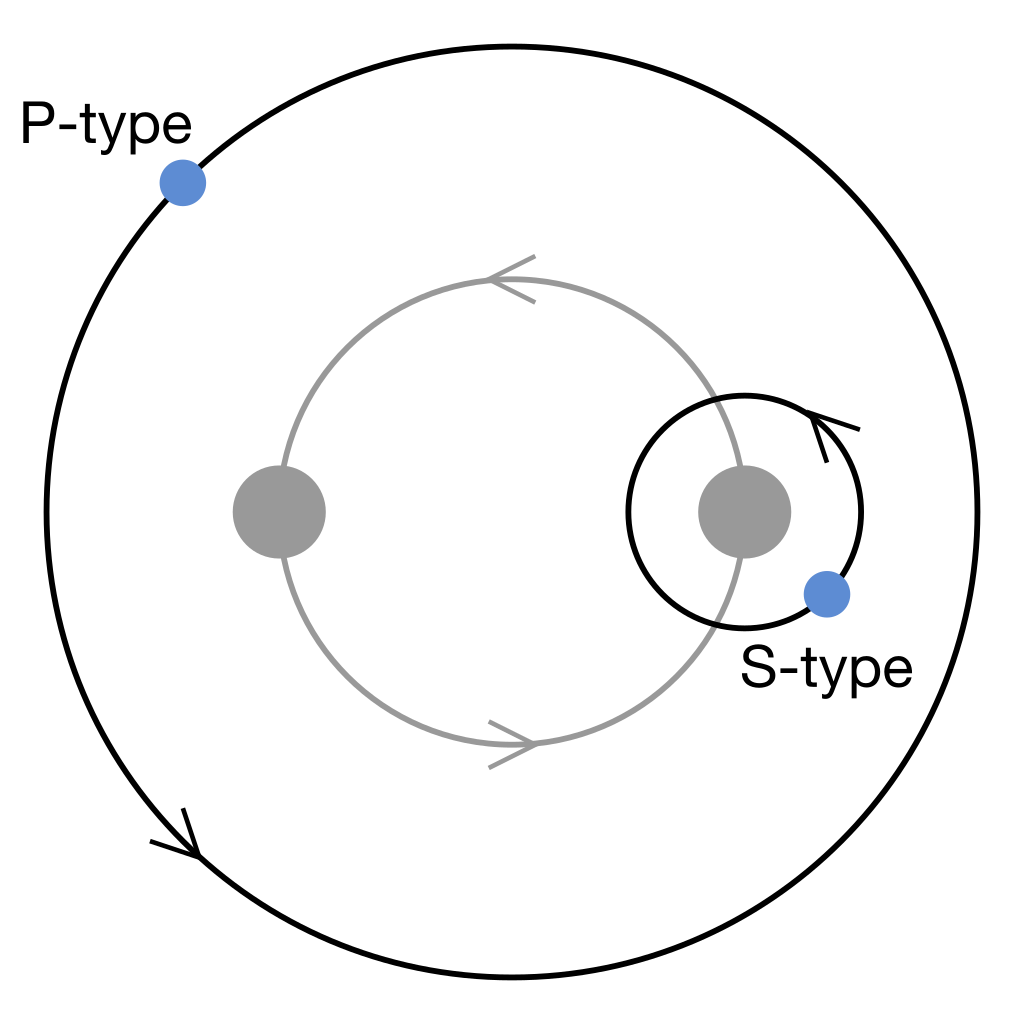
Life Forms on the Planet
The planet is home to two native sentient populations, The Jawas, and The Tuskens. Sarlaccs and Krayt Dragons made up some of the larger non-sentient species. Non Sentient mammals and reptiles such as Banthas, Dewbacks, Rontos, and Eopies were often domesticated to travel across the surface, while other creatures such as Massiffs and Tatooine Hyenas could be domesticated for Protection. Other creatures, such as Womp Rats and Scurriers, were considered pests by both the native population and the settling human population.
Subsurface-dwelling creatures such as Krayt Dragons, Sarlaccs, and Rontos, who require a lot of water to survive, imply that there are hidden subsurface water deposits that are inaccessible to humans for some reason.
Due to a lack of significant surface vegetation, the native species are all carnivorous, mostly surviving by eating the domesticated species. The domesticated species would rarely survive independently without their owners’ care.
Historic Features and Inferences
Legends speak of a time Tatooine was once rich with lush green forests and vast oceans. However, due to some unknown reason, they are no longer present. Presence of water historically would explain the features such as Canyons and Ravines, as they are formed by flowing water cutting through rocks through years of erosion.
The planet is divided between continental rocky masses and Vast Dune Seas. Given our theory of ancient water bodies, the ocean floor could be what was converted into the dune seas, with the silt and sand on the ocean floor turning into desert sand, while the continental masses survive the weathering of wind with very little damage compared to their massive size. However, smaller islands would have been eroded into mushroom-like structures, like the Mushroom Mesa, north of the Dune Sea. Such mushroom rocks are quite common on earth and are often found in deserts. They are formed when weathering on the bottom of a rock outcropping is more than on the top.

For a planet that was once filled with oceans and teeming with life to turn into a desert wasteland, we need not look further than our very own Mars. We have ample evidence that Mars was once filled with water, thanks to geological structures like the River and Lake Beds. We have strong reasons to believe that Mars once had flowing water. But what happened to that water today is anyone’s guess.

There are ice cap, mineral and subsurface water deposits that are known of, but that doesn’t account for all the water that would have been on Mars. One possible explanation is that when the water evaporates, it stays as Water Vapour in the atmosphere, here on earth. However, due to strong radiation, the water splits into Hydrogen and Oxygen, both of which go their separate ways, and some escape into space. Due to this, no matter how much water evaporated, it wouldn’t saturate the atmosphere, and slowly the water would be drained. It could explain the lack of humidity and clouds. And this would not prevent any Ice deposits or subsurface deposits from being depleted, like we observe on Mars.
By the appearance of things, Tatooine is undergoing this process. There is still moisture and humidity in the atmosphere, enough to make clouds, but not too much. Moisture Farming is a common profession, where people draw water out of the air for day to day use. The High level Cirrus clouds we see don’t cause much rain, or require much humidity to form. And the presence of the little vegetation we see is a pretty good indicator that there is water underground, perhaps too deep to access easily.
But how could a planet that had a lot of water, and didn’t have trouble supporting life at one point, be facing increased radiation all of a sudden? Tatooine could have once been farther away from the suns in the Goldilocks zone, but now is near the closer edges. This would imply that Tatooine is in a Decaying orbit around the star system, and will one day fall into the stars. The period of decay would be extremely long, and you wouldn’t notice anything year to year, or even between hundreds of years.
An interesting side effect of this is the effects of UV Radiation. As the planet is receiving energy from two suns, the strength of UV radiation the planet receives would also be stronger than an earth like planet, and the decaying orbit only helps increase the UV radiation on the planet. This would also explain why Obi-Wan Kenobi and the adults of the Lars Homestead look about ten years older than they biologically are during the events of the film A New Hope, as UV radiation is known to cause the effects of Aging to appear prematurely in humans.
An interesting source of water that the Tuskens have found is the Krayt Dragons. Being beasts of massive proportions, they require a lot of water to survive. As discussed, they could be living off of subsurface water sources. A Dead Krayt Dragon’s meat would not only have something to eat, but also a lot of water that could be extracted by dehydrating the meat.
Impact of Settlement on Local Culture
Despite being a planet under the Galactic Republic, mining companies had unofficially run the planet for centuries, as the planet was rich in ores that were important for various galactic-scale operations. The Dune seas were filled with lots of useful ore, such as Silicates, which would be useful for the production of Transperisteel; Sodium, which could be used for electrical circuits; and other metallic ores that would be used for the construction of everything from Massive Ships to orbital stations. However, due to the ore being polluted, the mining activities had been abandoned. While mining continues in small quantities even today, with little mining settlements being set up, it is not common.
The Mining equipment left behind by the corporations radically changed the lives of the Java Population. They picked up the scraps and equipment and made the mining Sandcrawlers as their homes, and became a population of traders, trading electrical and other such equipment with the humans in exchange for essentials like food, water, and currency.
With human settlement in major spaceports such as Mos Eisley or Mos Espa, a lot of essential resources like water and food would be concentrated. While moisture farmers would pull the water from the atmosphere with complex technology, the markets would have food and beverages both imported and locally made. Over the centuries, the Tusken have made a habit of raiding these settlements and taking their resources. This habit of theirs gave them the nickname among the settlers, “Tusken-Raiders.” Beyond this, the Tusken also see the settlements as colonizers who encroach on their land and take their resources.
While the Jawas coexisted with the humans, the Tuskens did not reach a similar peaceful solution.
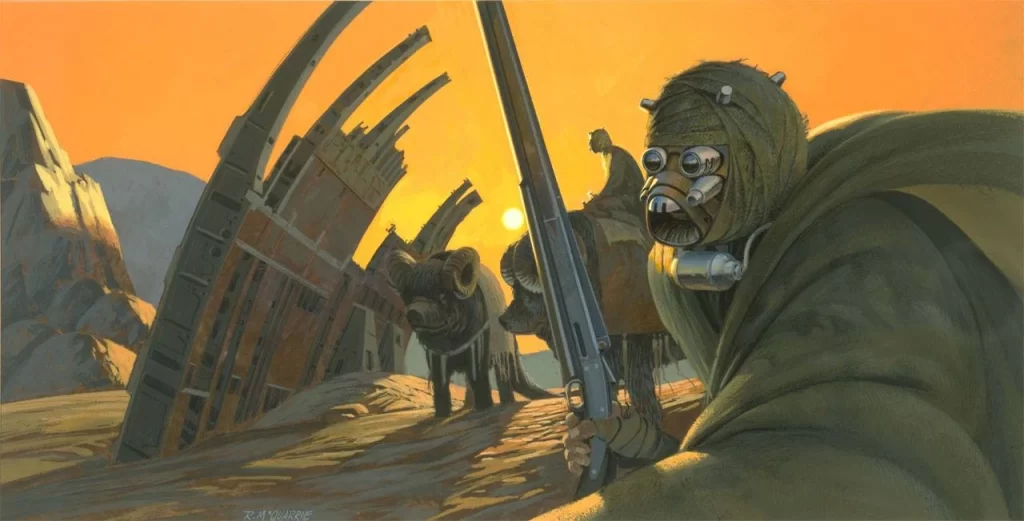
Single Biome Planet
One criticism that Many Planets of Star Wars face is that they are all Single-Biome. As in, one geographical relief makes up the entire planet. Given how the earth is, we’d expect any life-holding planet to be the same, covered in a multitude of biomes.
However, it is not implausible that a planet where a single biome dominates the surface. Planets such as Europa show that a planet can be completely covered in ice and snow, like Hoth, or Mars showing a giant wasteland, similar to Geonosis.
One issue is that not all of the planet receives the same amount of energy. The energy received near the poles is much less than the energy received near the equator. You could handwave this away, saying that the temperatures everywhere are desert-like, but not all deserts are equally hot. You could easily have nearly 10 degrees celcius difference in temperature between the equator and the poles. Given that most settlements have roots being mining colonies a long time ago, it is possible they didn’t have a choice of comfort and choose where it is cooler to live.
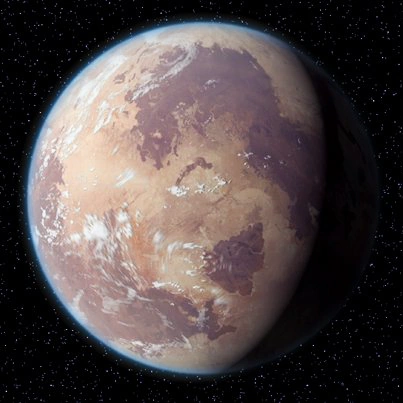
Conclusion
Despite being considered a backwater planet, Tatooine is a planet with a rich history and complex culture. Despite appearing like a Bland desert planet like Geonosis or Jakku at the first glance, the creator George Lucas, and a multitude of writers over the 40 years of its existence in popular culture have created a complex world with various populations and cultures which give it a rich history as great as any real region on our earth. Shockingly, despite the many creative liberties, the writers have taken with the description of the world, it still is a planet that could very much exist with the science we know today.
For a planet that was dreamt of nearly two decades before we knew of any real exoplanets, it is impressive that it still holds up to the scrutiny of science. In fact, the tale of the planet becomes richer under this lens, giving us more impressive details and helping us appreciate it better.
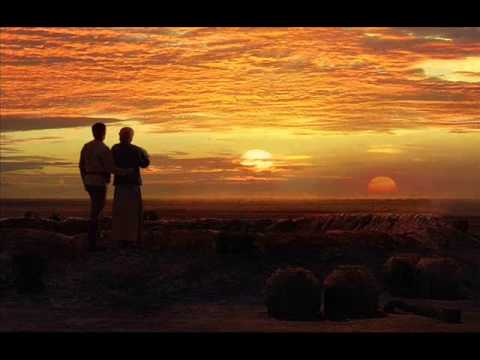


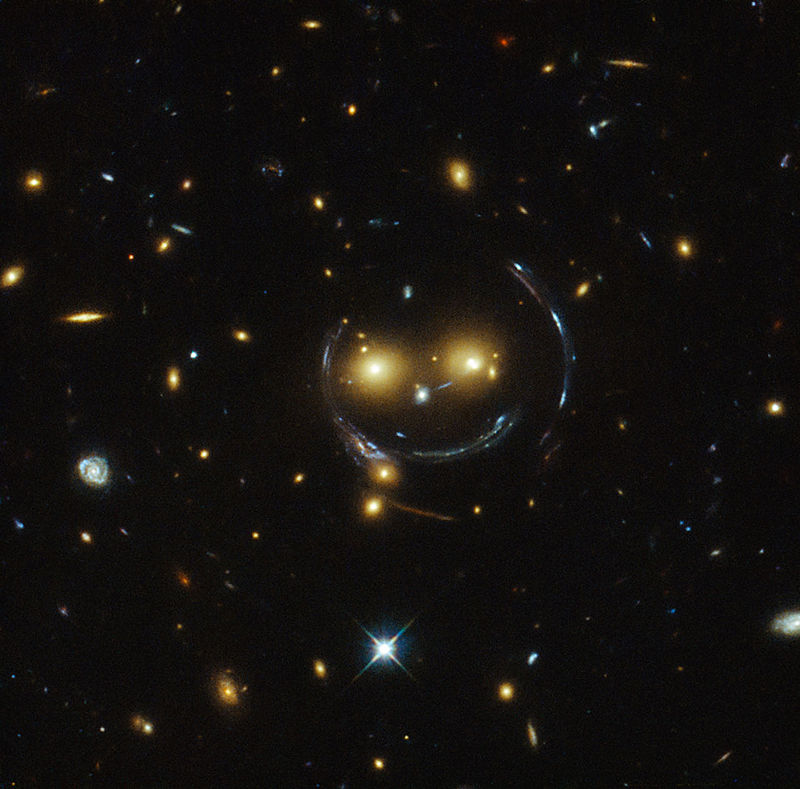

Leave a Reply